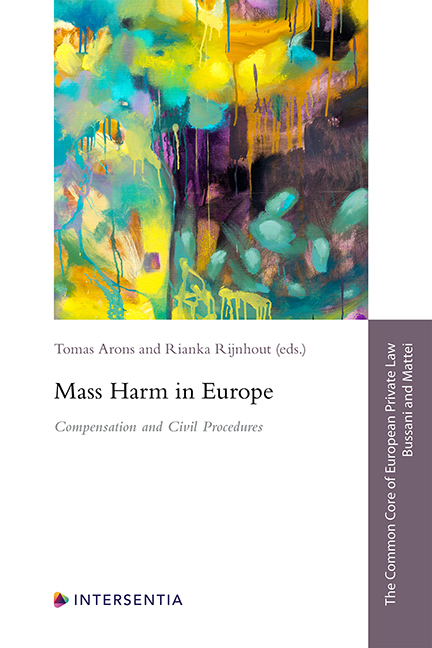Preliminary Remarks on the Methodology
Published online by Cambridge University Press: 03 April 2024
Summary
THE AIMS AND METHOD OF THE STUDY
The aim of this Common Core project on mass harm is to understand how substantive tort law – and sometimes contract law – responds in mass harm situations. As this response is also largely determined by procedural options for bringing a case, procedural law is also discussed in detail. Because we know that in some mass harm cases, compensation is not or cannot be offered through tort law, and because we realise that civil law is sometimes de facto inaccessible due to the large-scale nature of the damage, we chose to also reflect on the shift in compensation options beyond tort law. In essence, this approach allows us to analyse the factual and legal possibilities and impossibilities that exist to receive compensation for mass harm through tort law, and what triggers are present to seek an alternative compensation option. In doing so, we distinguish between different types of harms (e.g. personal injury, property damage and pure economic loss) and between different types of claimants (e.g. consumers, shareholders and foundations) and addressed parties (e.g. public authorities, companies and individuals). This approach allows for a detailed analysis on a possible common core regarding the settlement of mass harm through tort law in European private law. This analysis also makes it possible to evaluate whether the settlement of mass harm claims in European private law de facto leads to the outcomes intended, or whether there are more structural shortcomings in the protection of plaintiffs.
This project was carried out within the Tort Law group of the Common Core of European Private Law. The Common Core has an established methodology. Based on a questionnaire containing 12 actual mass harm cases, rapporteurs from 12 European jurisdictions provided insight into how the case in question is taken up in their jurisdiction in the context of tort (and sometimes contract) law. In doing so, we asked them to answer these cases in the light of legislation, case law and trends within their own jurisdictions, on the one hand, and to consider litigation options for collective actions or proceedings and a possible shift of compensation outside tort law, on the other hand. The jurisdictions covered are: Austria, Belgium, England and Wales, France, Germany, Greece, Ireland, Italy, Poland, Slovenia, Spain and the Netherlands.
- Type
- Chapter
- Information
- Mass Harm in EuropeCompensation and Civil Procedures, pp. 63 - 68Publisher: IntersentiaPrint publication year: 2023



